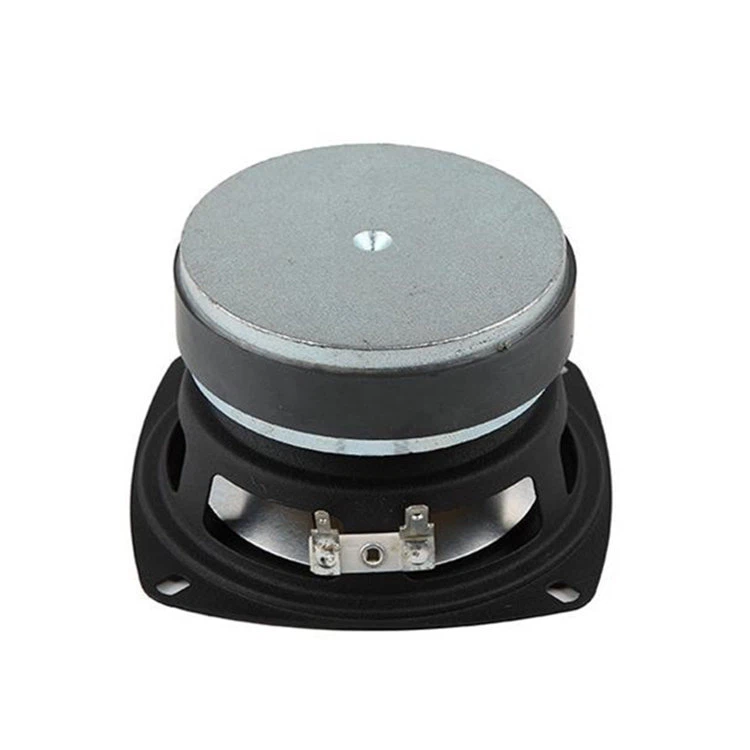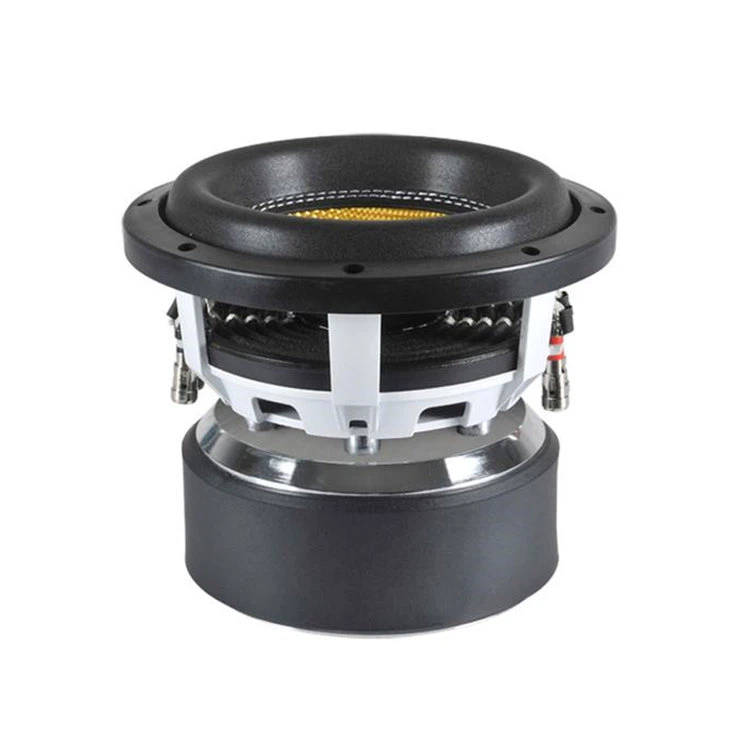Can extreme temperatures damage a woofer magnet?
 Jun 24, 2025|
Jun 24, 2025| Hey there! As a supplier of Woofer Magnet, I've been getting a lot of questions lately about whether extreme temperatures can damage a woofer magnet. It's a valid concern, especially for those who live in areas with harsh climates or use their audio equipment in outdoor settings. So, let's dive into this topic and find out what's really going on.
First off, let's understand how a woofer magnet works. In a speaker, the woofer magnet is a crucial component that creates a magnetic field. When an electrical current passes through the voice coil, it interacts with this magnetic field, causing the diaphragm to move back and forth. This movement of the diaphragm is what produces sound waves. So, you can see that the magnet plays a vital role in the whole audio - production process.
Now, let's talk about extreme temperatures. We'll break it down into two scenarios: high temperatures and low temperatures.
High Temperatures
High temperatures can have a significant impact on a woofer magnet. Most woofer magnets are made of materials like ferrite or neodymium. These materials have what's called a Curie temperature. The Curie temperature is the point at which a magnetic material loses its permanent magnetic properties.
For ferrite magnets, the Curie temperature is relatively high, usually around 450 - 460°C (842 - 860°F). However, even before reaching the Curie temperature, high temperatures can start to cause problems. As the temperature rises, the magnetic field strength of the magnet begins to decrease. This is because the thermal energy causes the magnetic domains within the material to become more disordered. When the magnetic domains are disordered, they don't align as well, which weakens the overall magnetic field.
If a woofer is exposed to high temperatures for an extended period, say in a hot car during summer or in a poorly - ventilated audio cabinet, the loss of magnetic field strength can be quite noticeable. You might start to notice a decrease in the speaker's performance. The bass might become weaker, and the overall sound quality can deteriorate.
In some extreme cases, if the temperature gets close to the Curie temperature, the magnet can lose a significant amount of its magnetism. This means that the speaker might not function properly at all, and you could end up having to replace the magnet.
Low Temperatures
Low temperatures are generally less of a concern compared to high temperatures, but they can still have an impact. When it's cold, the materials in the woofer, including the magnet, contract. This contraction can put stress on the magnet and its surrounding components.
In most cases, the magnet itself can withstand relatively low temperatures without losing its magnetic properties. However, the contraction can cause mechanical issues. For example, the glue that holds the magnet in place might become brittle and start to crack. If the magnet isn't held securely, it can move slightly within the speaker assembly. This movement can cause rubbing against other parts, which can lead to unwanted noise or even damage to the voice coil.
Also, very low temperatures can affect the electrical properties of the voice coil. The resistance of the coil can change, which can further affect the interaction between the coil and the magnetic field. This can result in changes in the speaker's frequency response and overall performance.
Real - World Examples
I've had customers come to me with issues related to temperature damage. One customer had a set of 10 Inch Speaker Magnet - equipped woofers in his home theater system. He placed the speakers in a small, enclosed cabinet without proper ventilation. Over time, he noticed that the bass was getting weaker. When we inspected the speakers, we found that the magnets had been exposed to high temperatures due to the lack of air circulation. The magnetic field strength had decreased, and we had to replace the magnets to restore the speaker's performance.
Another customer used a subwoofer with a Subwoofer Impulse Triple Magnet in an outdoor event during winter. After a few hours, he started hearing strange noises coming from the subwoofer. Upon inspection, we found that the cold had made the glue holding the magnets brittle, and it had cracked in some places. The magnets were moving slightly, causing the noise. We were able to repair the speaker by re - gluing the magnets and making sure they were properly secured.
Protecting Your Woofer Magnets from Temperature Extremes
So, how can you protect your woofer magnets from extreme temperatures?
- Proper Ventilation: Make sure that your audio equipment has proper ventilation. If you're using a speaker cabinet, ensure that there are enough vents to allow hot air to escape.
- Avoid Extreme Environments: Try not to expose your speakers to extreme heat or cold. Don't leave them in a hot car for long periods, and if you're using them outdoors in cold weather, take breaks to let them warm up.
- Use Temperature - Resistant Magnets: If you know that your speakers will be exposed to high temperatures, consider using magnets with a higher Curie temperature or better temperature stability. For example, some neodymium magnets are designed to have better performance at high temperatures.
Conclusion
In conclusion, extreme temperatures can definitely damage a woofer magnet. High temperatures can weaken the magnetic field strength and even cause the magnet to lose its magnetic properties if the Curie temperature is reached. Low temperatures can cause mechanical issues and affect the electrical properties of the voice coil.
As a supplier of Woofer Magnet, I always recommend taking proper care of your audio equipment. If you have any concerns about the temperature resistance of the magnets in your speakers or if you're looking for high - quality, temperature - resistant woofer magnets, feel free to reach out. We're here to help you ensure that your speakers perform at their best, no matter the environment.


If you're interested in our products, such as the 10 Inch Speaker Magnet or Subwoofer Impulse Triple Magnet, don't hesitate to contact us for more information and to start a procurement discussion. We're eager to work with you to meet your audio needs.
References
- "Magnetism and Magnetic Materials" by David Jiles
- "Handbook of Magnetic Materials" edited by Klaus H. J. Buschow

